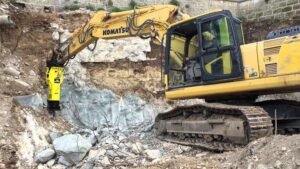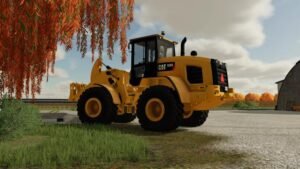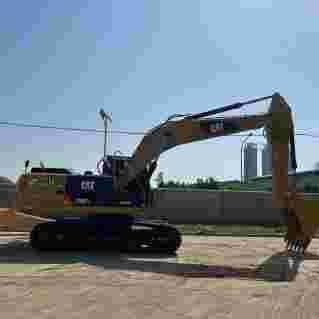So let’s talk about the right excavator for you and your work needs, because the right excavator is extremely important for construction work. Especially with all the different options on the market which one should you get? If you’re trying to decide are you going to buy a Japanese brand like Komatsu, Hitachi and everybody else in the world Caterpillar, then this report is for you.
When it comes to excavators, Japanese brands like Komatsu, Hitachi, and Kobelco are renowned for their premium quality and durability. However, global brands like Caterpillar and Volvo also offer competitive features. This article compares these brands, focusing on quality, price, and long-term value to help you make an informed choice for your next purchase.
Now, let’s compare Japanese excavator brands with global excavator brands in more detail to see which one is the best fit for you.

Table of Contents
ToggleJapanese Excavator Brands: Known for Premium Quality
The Japanese-built excavator – regardless of the brand name printed on the side – has a well-earned reputation of quality around the world. Komatsu, Hitachi, and Kobelco have defined the industry standard for construction machinery, and their reputations have been built on precision engineering, dependability, and comfortable, clever technology use.
Precision Engineering and Durability
Japanese brands are known for that exacting precision in every machine they build. The result is an excavator that is overbuilt for the work it will perform. That overbuilt precision results in more durability and ultimately reliability over time. This is why many customers choose the Japanese brands despite those initial high ADMs. These machines are made out of top-tier materials.
They are built so they don’t wear out. Japanese brands know how to apply the parts needed to keep these machines clanging and banging each day and month of the year, regardless of how hard you’re working them. What you’re doing doesn’t matter to a Japanese brand excavator. You can work them hard in urban construction; you can work them in mining; you can make them dig trenches in abstraction; or you can run them harder than you can possibly run them doing road work. It doesn’t matter what you do, they can take it.
Technology and Innovation
To achieve full benefit, you need to control the inclination of the Implement in real-time. On the high-quality tools, you’ll have that option. For example, Komatsu’s intelligent machine control, IMS, lets you do that precisely and accurately. With a feature like that, fuel consumption goes down. No question about it. And you dig with far greater precision and ease. And you’re wearing out shucks and thumb that much more slowly./(BH Note perfect solution for user. But this is an example of how technology reduces fuel consumption through operating efficiency.
Table: Key Features of Japanese Excavators
| Brand | Model | Engine Power (HP) | Operating Weight (kg) | Fuel Efficiency | Technology Features |
| Komatsu | PC200-8 | 150 | 21,800 | High | Auto Idle, GPS, Fuel Control |
| Hitachi | ZX330LC-6 | 173 | 27,000 | Very High | Smart Hydraulic, Anti-Skid |
| Kobelco | SK210LC-10 | 170 | 22,000 | Moderate | HIOS-III System, Fuel Saver |
As the table shows, Komatsu and Hitachi models are embedded with the latest technology, which improves fuel use thus playing a significant role in saving operating expenses.
Price Comparison: How Japanese Excavators Stack Up Against Global Brands
By price, Japanese excavators tend to cost more than the initial investment compared to other global models. But, in reality, they are more cost-effective in the long run because of their lower operation and maintenance costs.
Factors Influencing Price
The price of an excavator is influenced by several factors:
- Brand Reputation: Japanese technology has established itself as a high-end, reliable machine worth the extra upfront cost for purchase.
- Technology and Features: The technology in the machine drives the price. The innovation, fuel-saving characteristics, environmentally friendly engines, and equipment software systems all play a significant role in the price.
- After-Sales Service: The ability to have a world-class after-sales service network. Also, do they have the availability of a factory extension on warranties?
while they may have a higher purchase price up front, the lower fuel costs, maintenance costs, and higher life-span make them a better buy in the long-term for total value.
Table: Price Comparison for Popular Excavator Models
| Brand | Model | Price Range (USD) | Primary Features |
| Komatsu | PC200-8 | $80,000 – $120,000 | Fuel-saving, advanced hydraulics |
| Hitachi | ZX330LC-6 | $85,000 – $125,000 | High digging depth, precision control |
| Caterpillar | CAT 320D | $90,000 – $140,000 | Strong lifting capacity, long-term reliability |
| Volvo | EC480DL | $95,000 – $135,000 | Powerful engine, low emissions |
From this comparison, you can see the pricing is in the same ballpark as the Caterpillar and Volvo machines. But, these guys build the heck out of their machines and have much more efficient machines. Also, you typically get a better cost vs. performance.

Key Strengths of Japanese Excavator Brands
Japanese excavators excel in several areas that make them a superior choice for construction projects.
Fuel Efficiency and Environmental Performance
These advanced features make Japanese excavators a popular choice for a wide range of construction and excavation jobs. They are also widely used in the demolition industry to tear down and remove buildings and other structures. Japan is known for developing unique solutions and machines for these applications and is constantly improving their designs and adding new features and capabilities. These machines are also used in the mining industry to dig out and load materials. Japanese companies are making continuous improvements in machine design and capabilities to address new applications, which is one of the major reasons their machines are in demand worldwide.
Lower Maintenance Costs
And because they are built to last, Japanese brands generally have a higher resale value. Even though they may have upfront costs, these machines are designed to last for many, many years. In fact, one of the major benefits of buying Japanese machinery is that they often work so well for so long that you can end up getting more than your money’s worth out of them.
Availability of Spare Parts and Easy Repair
While Western companies have international dealer networks as well, these are often smaller and in fewer markets. This means that if a company with a Western product has a problem in an area without a dealer network – perhaps in a remote area of a foreign country – it can be almost impossible to get spare parts or service. And shipping parts or service personnel to such a location can be incredibly expensive. With a Japanese product, a company is likely to find a dealer not only in the major metropolitan areas, but even in remote jungle and desert locations all around the world. And that dealer can get parts and service personnel there quickly and inexpensively.
User-Friendly Features
Japanese excavators are designed with the operator’s comfort and ease of use in mind. Features such as ergonomic seats, easy-to-use controls, and advanced safety features make Japanese machines stand out in terms of operator satisfaction and efficiency.
Table: Key Strengths of Japanese Excavators
| Strength | Komatsu PC200-8 | Hitachi ZX330LC-6 | Kobelco SK210LC-10 |
| Fuel Efficiency | High | Very High | Moderate |
| Maintenance Cost | Low | Low | Moderate |
| Spare Parts Availability | Excellent | Excellent | Good |
| User Comfort Features | Advanced | Premium | Standard |
As seen in the table, Komatsu and Hitachi lead in fuel efficiency and low maintenance costs, providing substantial savings over time.
Performance Comparison: Japanese Excavators vs Other Global Brands
When evaluating contractors and manufacturers of excavators used in mining, it’s no simple matter to prove claims about who is the best. The performance situation may change with every project. But in general, the performance of the excavator itself is the critical variable in choosing the correct make, outside of tractors pulling scrapers, etc. Japanese makes top the performance criteria in this author’s humble opinion when you consider digging depth, lift capacity and sheer hydraulic power – for example, a Hitachi or a Komatsu.
Performance for Heavy-Duty Projects
Therefore, these large types of equipment can be rebuilt and recycled multiple times, and there will still be a market for them. Whatever your particular need might be, the Japanese manufacturers are known around the world for making exceptional construction equipment for serious work. Whether digging in frozen ground or dredging out rivers, these serious machines are built for serious work.
Performance in Urban Construction
But in the close confines of an urban job site, digging to a precise location through narrow streets or tall buildings, the Jap machines, with superior hydraulic systems and very compact designs, can make all the difference in the world. Low-tail swing models can really save the day in congested areas where you will always want to dig or place material at your own machine’s rear swing radius.
Table: Performance Comparison of Excavators
| Brand | Model | Digging Depth (m) | Lifting Capacity (kg) | Hydraulic Power (kW) |
| Komatsu | PC200-8 | 6.6 | 20,000 | 125 |
| Hitachi | ZX330LC-6 | 6.9 | 21,000 | 130 |
| Caterpillar | CAT 320D | 6.5 | 19,000 | 120 |
| Volvo | EC480DL | 6.7 | 20,500 | 125 |
| Hyundai | R220LC-9S | 6.4 | 18,500 | 110 |
Table data clearly shows that Hitachi and Komatsu have a slight advantage in digging depth and hydraulic power, making it best suited for strong applications like hard rock.

After-Sales Service and Support: How Japanese Brands Stand Out
Global Service Network and Warranty
Another thing that stands out with Japanese brand excavators versus the global competition is the after-sale service. The vast service network of Japanese excavator brands, such as Komatsu, Hitachi, Kobelco, means that people can get spare parts, maintenance service, and technical support worldwide. They have some of the most extensive service networks in the world. They also offer comprehensive warranties on parts and service, which provides customers with even more confidence in the machine.
The number one priority of Japanese manufacturers is customer satisfaction and machine uptime. They do this by offering superior service. Most Japanese machines offer a standard 2-year warranty. In contrast, European manufacturers might offer a 1-year warranty and Kindle offers a 3-year warranty. When it comes to service – support, parts, warranty – it’s the most competitive out there.
Comparing Service and Parts Availability
To further highlight the differences in after-sales service, let’s look at a comparison of global service networks and parts availability for popular brands:
| Brand | Global Service Network | Warranty Coverage | Spare Parts Availability |
| Komatsu | Excellent, with regional hubs | 1-3 years | Extensive, fast delivery |
| Hitachi | Very good, globally recognized | 1-3 years | Widely available worldwide |
| Caterpillar | Extensive, with many dealers | 1-2 years | Global presence, very fast |
| Volvo | Strong, with local dealers | 1-3 years | Readily available |
Clearly for something like digging depth and breakout force, they’re so close you couldn’t call one above another. But looking at Komatsu and Hitachi I’m going to say they have a little bit more breakout force and a little bit more digging depth. If you’re dealing with rock, Komatsu and Hitachi are probably your best bet. And if you compare service networks and parts availability, again it’s very close. However, Komatsu and Hitachi have a little more squared away in that area so they can better handle you.
Long-Term Value: Why Japanese Excavators Are Worth the Investment
Resale Value
Japanese excavators are known for their fuel efficiency. This can be a huge benefit for owners when fuel prices are high. If the jobsite is close to the shop, convenience store, or your truck is equipped with a fuel tank, you may not realize how significantly fuel-efficient equipment can save you money until later. A simple way to calculate the savings is to keep track of how much diesel fuel was used last year by each piece of equipment. Then, based on current diesel fuel prices, figure out how much money you would have saved on fuel last year if you’d been using a more fuel-efficient machine. Take those savings into account when you’re shopping for your next excavator.
Total Cost of Ownership (TCO)
The Total Cost of Ownership is the real thing to look at when buying an excavator. Typically, Japanese excavators will have a lower TCO due to fuel consumption, less maintenance, and longevity of parts. They are built heavy, built to go through the dirt, and built to be economical to operate
A comparison of the 5-year TCO for various brands shows how Japanese excavators stack up against their competitors:
| Brand | Resale Value | 5-Year TCO (USD) | Key Factors Affecting TCO |
| Komatsu | High | $50,000 – $70,000 | Fuel efficiency, reliability, lower maintenance |
| Hitachi | High | $50,000 – $72,000 | Fuel-saving technologies, low operating costs |
| Caterpillar | Moderate | $55,000 – $75,000 | Heavy-duty performance, high repair costs |
| Volvo | Moderate | $53,000 – $74,000 | Low operational costs, robust engine |
As we can see from the table, though, in the very long run you’d save more money using the Komatsu. One key factor we would use to determine which machine to buy is the price. On a monthly basis these three look very close. The Hitachi and Komatsu machines both save on fuel and maintenance, so if one of these fits into your business plan better than the other, then that’s the machine you should consider buying. In your world they both require a D-6 dozer to move them around, so there is no difference between them and the choices are still wide open.

Final Verdict: Which Brand Should You Choose?
In short, they are reasonably priced, provide excellent quality, and have good long-term value. For a small business owner or a person managing a big construction project, Japanese equipment like Komatsu, Hitachi, and Takeuchi tend to be some of the best brands overall.
If you’re a small guy or are budget-conscious, you can afford a Japanese excavator because it’s so fuel efficient. It’s cheaper to maintain and save money over time. If you’re a big guy doing the heavy lifting, you may need a Komatsu or Hitachi to do the heavy stuff. It’s worth the extra money long term to get the durability and long life out of your big, heavy equipment.
In summary, Japanese excavators are a good purchase and a good value for the quality, price, and long-term value they provide.
Conclusion
Japanese excavator brands offer exceptional value because they provide high quality machines at competitive prices. They also provide a high level of after-sales service, parts availability, and factory support. Regardless of the brand you choose, their long-term value is very high given their strong reputation, quality product, and advanced technology.
When choosing an excavator, consider things like stick length, bucket capacity, and maximum digging depth. Look at the total cost of ownership for a five year period to truly compare machines. If topping off the hydraulic tank with a gallon of hydraulic oil every day, changing pins and bushings two times in five years, or rebuilding the swing motor once a year is a big deal, maybe the more expensive machine is the better deal. Bottom line: if you buy a Japanese machine from a Japanese manufacturer, you’ll be buying a very high quality machine.
If they made it, they stand behind it. If you buy a Chinese machine and the factory stops producing it in two years, good luck getting parts or factory support. If it does break, and you can’t get parts, who are you going to blame? Whether you purchase a Komatsu, Hitachi, or Kobelco, you’ll likely make ten times your investment with these three brands versus a Kimberwick or similar setup.
Follow us on :YouTube.










